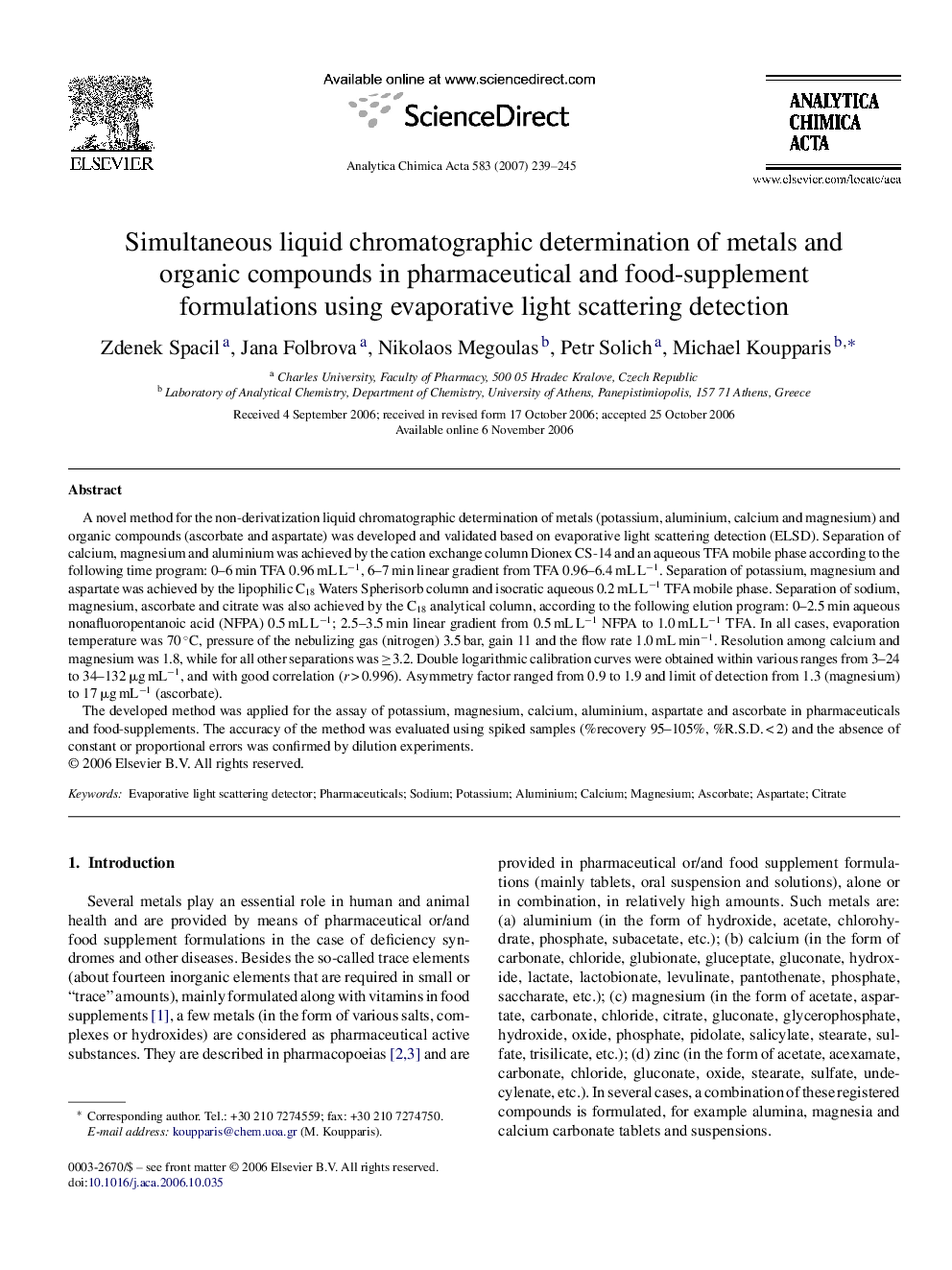| Article ID | Journal | Published Year | Pages | File Type |
|---|---|---|---|---|
| 1171367 | Analytica Chimica Acta | 2007 | 7 Pages |
A novel method for the non-derivatization liquid chromatographic determination of metals (potassium, aluminium, calcium and magnesium) and organic compounds (ascorbate and aspartate) was developed and validated based on evaporative light scattering detection (ELSD). Separation of calcium, magnesium and aluminium was achieved by the cation exchange column Dionex CS-14 and an aqueous TFA mobile phase according to the following time program: 0–6 min TFA 0.96 mL L−1, 6–7 min linear gradient from TFA 0.96–6.4 mL L−1. Separation of potassium, magnesium and aspartate was achieved by the lipophilic C18 Waters Spherisorb column and isocratic aqueous 0.2 mL L−1 TFA mobile phase. Separation of sodium, magnesium, ascorbate and citrate was also achieved by the C18 analytical column, according to the following elution program: 0–2.5 min aqueous nonafluoropentanoic acid (NFPA) 0.5 mL L−1; 2.5–3.5 min linear gradient from 0.5 mL L−1 NFPA to 1.0 mL L−1 TFA. In all cases, evaporation temperature was 70 °C, pressure of the nebulizing gas (nitrogen) 3.5 bar, gain 11 and the flow rate 1.0 mL min−1. Resolution among calcium and magnesium was 1.8, while for all other separations was ≥3.2. Double logarithmic calibration curves were obtained within various ranges from 3–24 to 34–132 μg mL−1, and with good correlation (r > 0.996). Asymmetry factor ranged from 0.9 to 1.9 and limit of detection from 1.3 (magnesium) to 17 μg mL−1 (ascorbate).The developed method was applied for the assay of potassium, magnesium, calcium, aluminium, aspartate and ascorbate in pharmaceuticals and food-supplements. The accuracy of the method was evaluated using spiked samples (%recovery 95–105%, %R.S.D. < 2) and the absence of constant or proportional errors was confirmed by dilution experiments.
